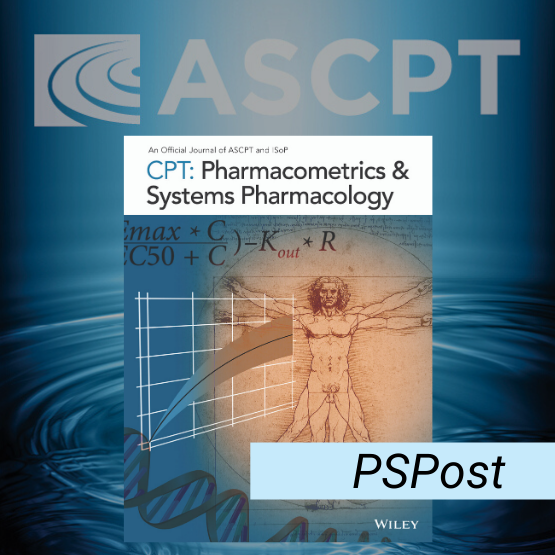Author: Piet van der Graaf, PhD, PharmD on October 22, 2016 
This month, PSP features a contribution from Pelligrand et al.1, the topic of which is unusual for PSP in the sense that the paper does not relate (directly or indirectly) to human pharmacology, but is concerned with a population pharmacokinetic analysis of robenacoxib in cats, with the intention to optimize the analgesic pharmacotherapy in veterinary surgical practice. The main conclusion is that the analysis suggests that in cats undergoing surgery, there is no rationale for robenacoxib covariate-based dosing adjustments. This finding demonstrates the requirement for species-specific dosing guidance, since in dogs body weight has a significant effect on robenacoxib pharmacokinetics. Thus, the study demonstrates the potential utility of model-informed dosing protocols in veterinary medicine and also that non-linear mixed effects (NLME) modelling can provide the technical framework for such an approach.
Pharmacometrics is not widely used in the development and use of veterinary pharmacotherapy and according to the authors, their study is the first of its kind in cats1. In a recent perspective2, the following four opportunities were presented for further implementation of modeling and simulation in veterinary medicine:
- Expand the application of modeling and simulation to issues specific to veterinary pharmacology, such as collective therapy where the input drug function (i.e. individual dose) is not known, as it may depend on the animal social behavior for pour-on formulations in cattle, or hierarchy for administration of oral drugs in pigs;
- Bridge the gap between the level of modeling and simulation practiced in human and veterinary pharmacology;
- Explore how modeling and simulation concepts can be used to improve our understanding of common issues not readily addressed in human pharmacology (e.g. breed differences, tissue residue depletion, anti-parasitic PKPD, vast weight ranges among adults within a single species, interspecies differences, availability of different sampling matrices);
- Describe how quantitative pharmacology approaches could help understanding key pharmacokinetic and pharmacodynamics characteristics of a drug candidate, with the goal of providing explicit, reproducible, and predictive evidence for optimizing drug development plans, enabling critical decision making, and eventually bringing safe and effective medicines to veterinary patients.
Another opportunity, which relates more to Quantitative Systems Pharmacology (QSP), is to what extend efficacy and safety data obtained in clinical pharmacology studies and veterinary practice in actual diseased animals (instead of the more commonly-used surrogate preclinical models) can be better leveraged to aid model-informed drug discovery and development (MID3). PSP invites contributions in this novel area of pharmacometrics and systems pharmacology.
[1] Pelligand, L., Soubret, A., King, J.N., Elliott, J., Mochel, J.P. (2016). Modeling of large pharmacokinetic data using nonlinear mixed-effects: a paradigm shift in veterinary pharmacology. A case study with robenacoxib in cats. CPT: Pharmacometrics & Systems Pharmacology, doi:10.1002/psp4.12141
[2] Riviere, J.E., Gabrielsson, J., Fink, M. & Mochel, J. (2015). Mathematical modelling and simulation in animal health. Part I: Moving beyond pharmacokinetics. J. vet. Pharmacol. Therap., doi: 10.1111/jvp.12278

The comment feature is locked by administrator.